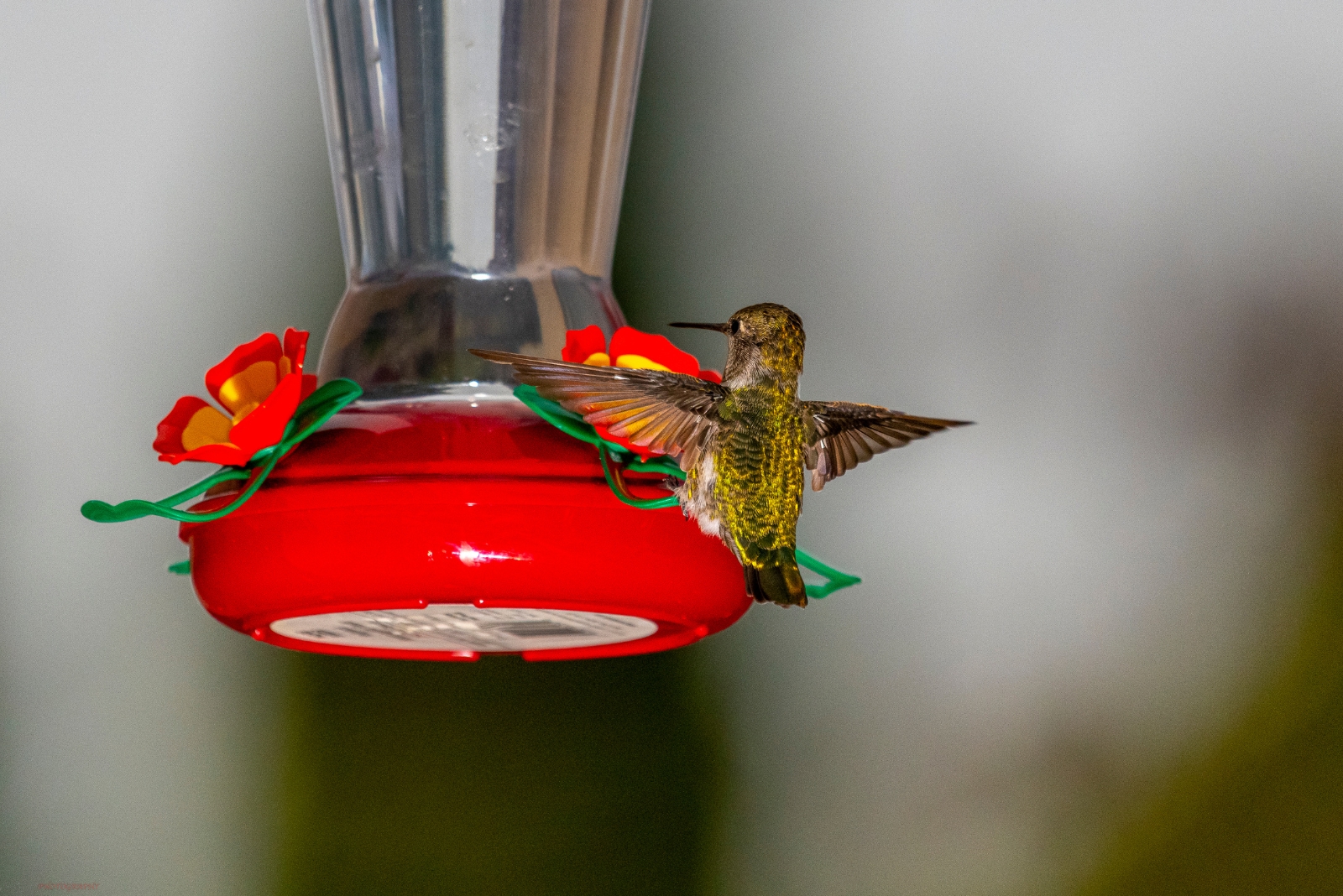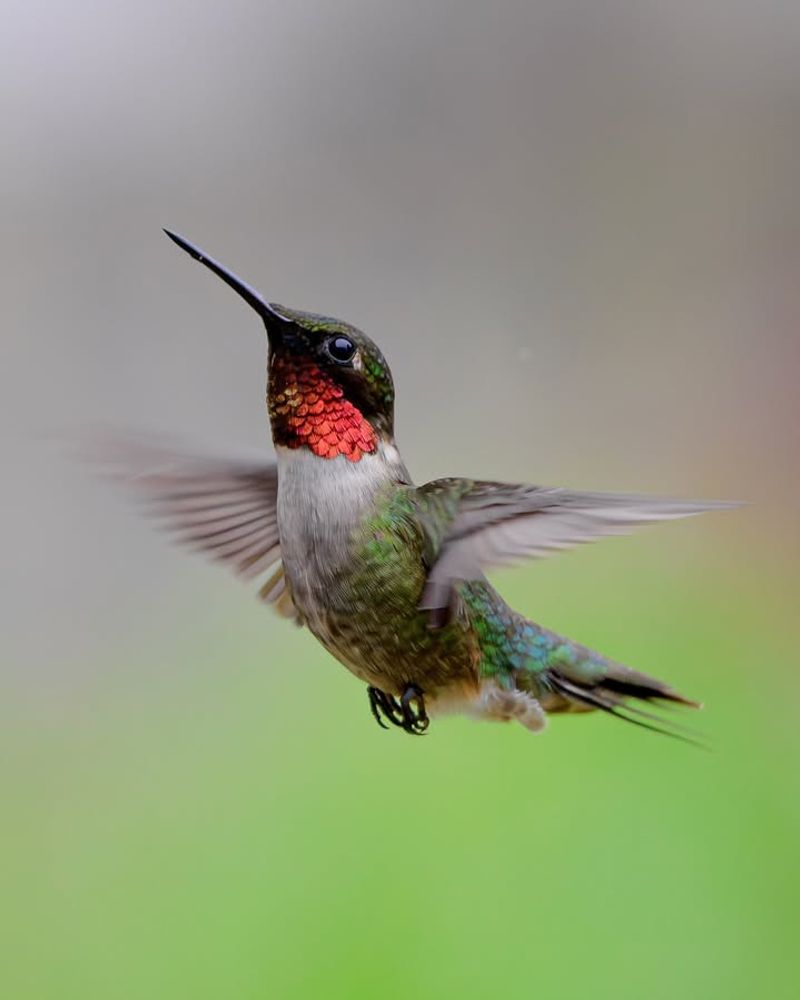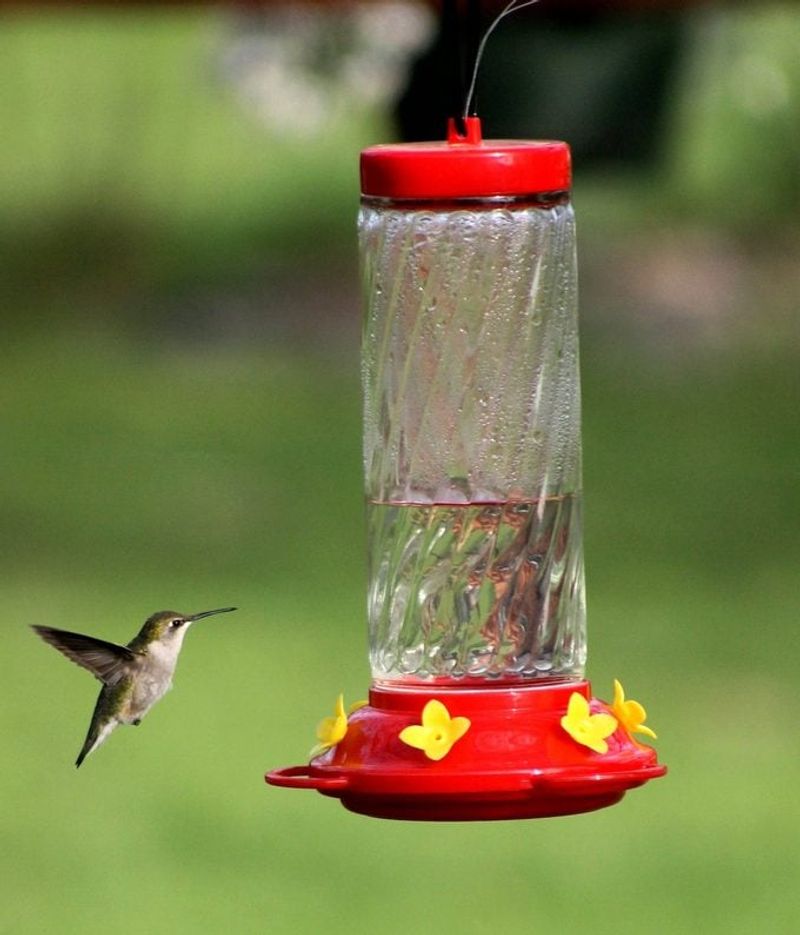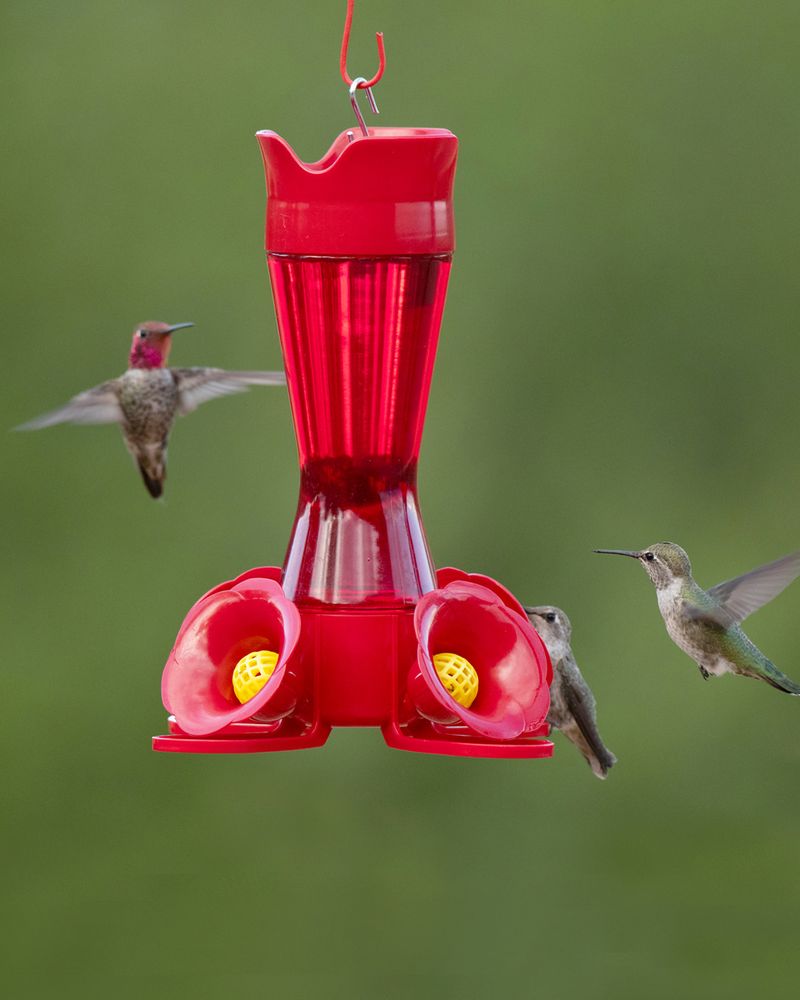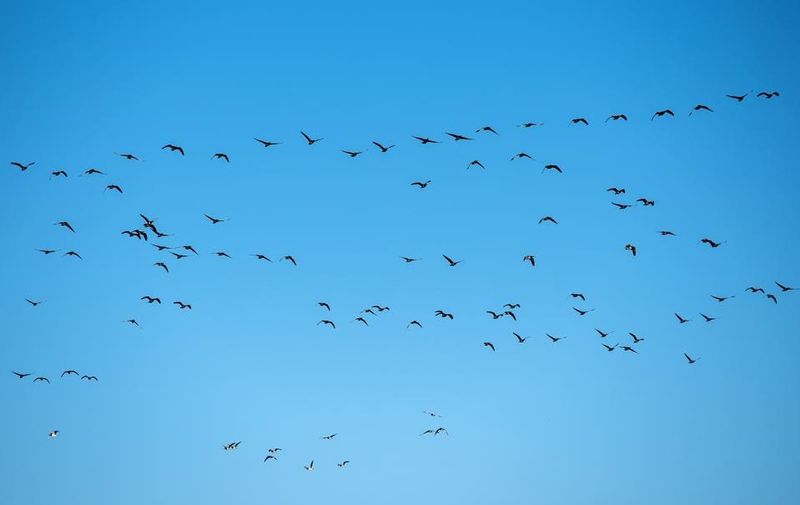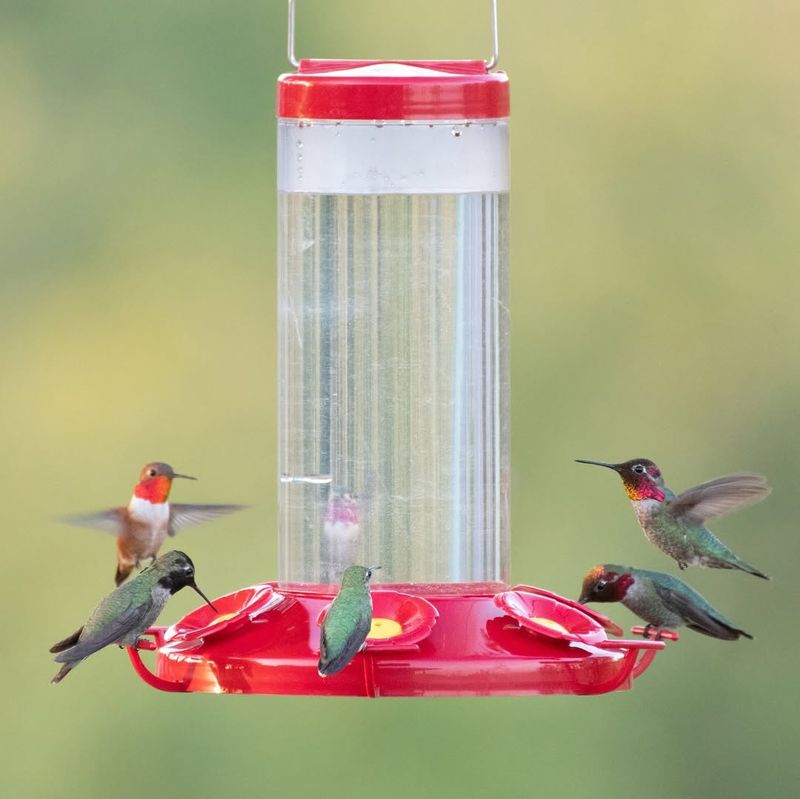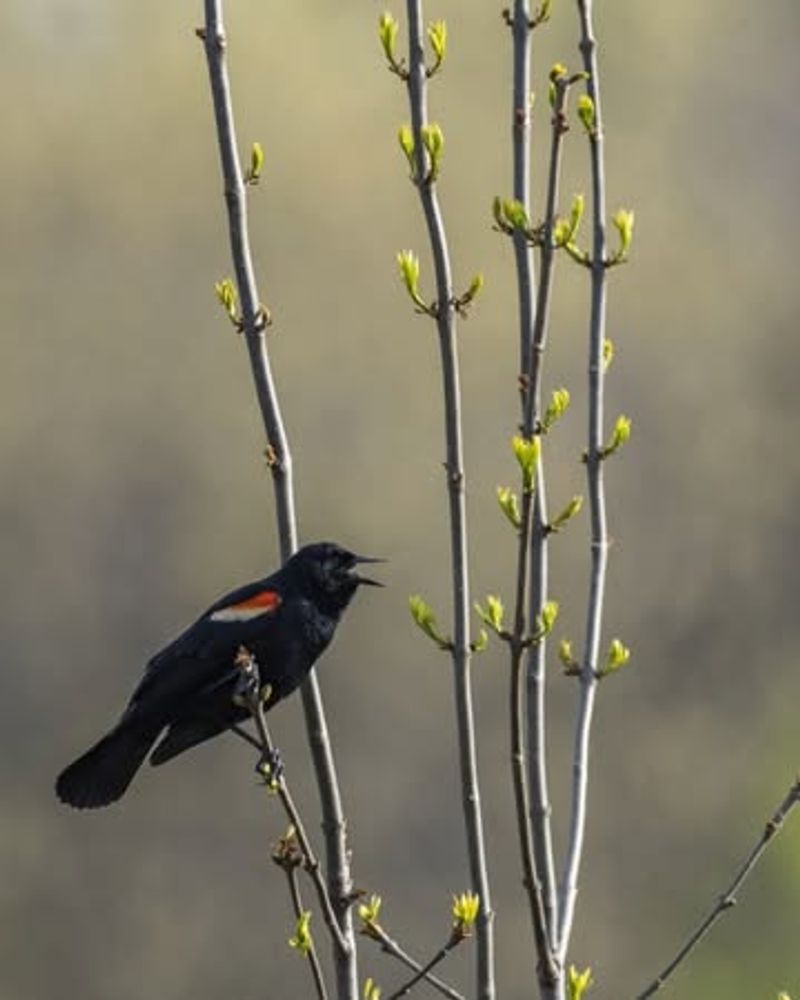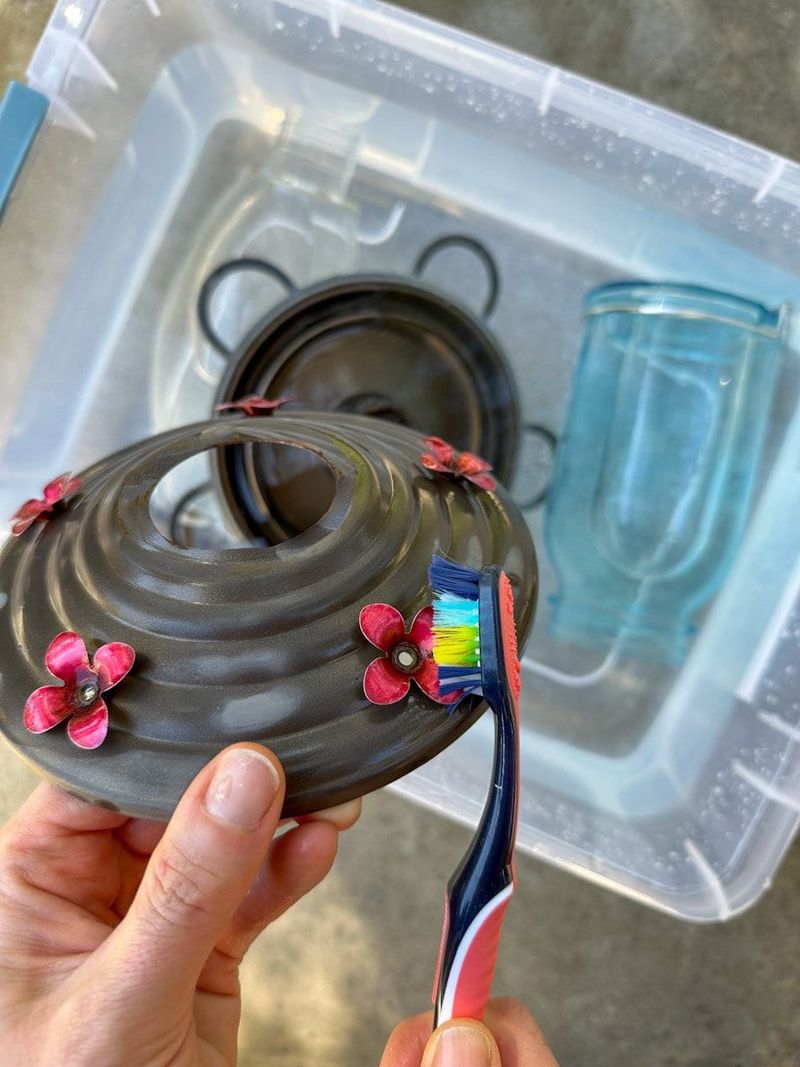Knowing when to take down your hummingbird feeders in Connecticut can be tricky for backyard bird enthusiasts. Ruby-throated hummingbirds migrate south each fall, but the exact timing varies from year to year.
Making the right decision helps these tiny travelers while preventing wasted nectar during the cold months ahead.
1. Wait Until Mid-October For Stragglers
Most Connecticut hummingbirds start their southern migration by early September, but some stragglers might still be passing through until mid-October. These late travelers often include juveniles born late in the season or birds from northern states making their way south.
Keeping your feeder up until around October 15th ensures these latecomers have fuel for their journey. The extra couple of weeks won’t hurt anything, but could make a big difference to a hungry hummingbird preparing for its long flight.
2. Monitor Feeder Activity Closely
Grab a notebook and jot down when you spot hummingbirds at your feeder during late summer and early fall. Once you notice two weeks with absolutely no visitors, it’s probably safe to bring the feeder in for the season.
Morning and evening hours typically show the most feeding activity. Try setting aside 15 minutes during these peak times to watch your feeder. Some Connecticut bird lovers even set up simple trail cameras to track visits when they can’t personally monitor.
3. Follow Weather Pattern Changes
Connecticut’s first frost signals nature’s official end to hummingbird season. When overnight temperatures consistently dip below 40°F, most hummingbirds have already headed south to warmer climates.
Keep an eye on local weather forecasts starting in late September. The Connecticut Valley often experiences frost earlier than coastal areas, so your specific location within the state matters. Unlike some hardier birds, hummingbirds simply cannot survive freezing temperatures.
4. Join Citizen Science Migration Trackers
Websites like Journey North and eBird collect real-time data from bird watchers across North America. By checking these resources, you’ll see exactly when the last hummingbirds are spotted in Connecticut each year.
Many Connecticut Audubon chapters also maintain local migration calendars. These community science projects not only help you time your feeder removal perfectly, but your observations contribute valuable data for researchers studying how climate change affects migration patterns.
5. Don’t Worry About Delaying Migration
A persistent myth claims keeping feeders up too long prevents hummingbirds from migrating. Rest assured – this simply isn’t true! Hummingbirds migrate based on daylight hours, not food availability.
Connecticut’s shortening fall days trigger hormonal changes that create migratory restlessness in these tiny birds. Your feeder actually helps by providing essential energy for their journey south. The birds will leave when they’re ready, regardless of your feeder’s presence.
6. Consider Early Spring Return Dates
Mark your calendar for early April when planning next year’s feeding schedule. Connecticut typically sees the first returning ruby-throated hummingbirds between April 15-25, though some early arrivals may appear in warmer springs.
Storing your clean feeder in an easy-to-access spot helps you quickly prepare for these spring pioneers. These early birds often remember reliable feeding locations from previous years, so maintaining consistent placement year after year increases your chances of welcoming back the same tiny visitors.
7. Properly Clean And Store Your Feeder
Before storing your feeder for winter, give it a thorough cleaning with hot water and white vinegar. Remove any mold or sugar deposits that could harm birds next season.
Connecticut’s humid climate can encourage mildew growth on stored feeders. Make sure your feeder is completely dry before storing in a breathable container – not plastic bags. Adding a note with the date you stored it serves as a helpful reminder of when you last maintained it.

